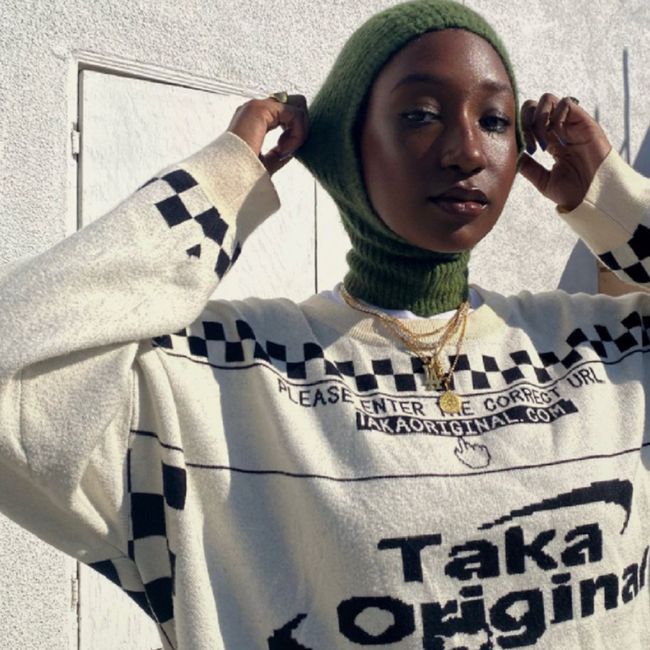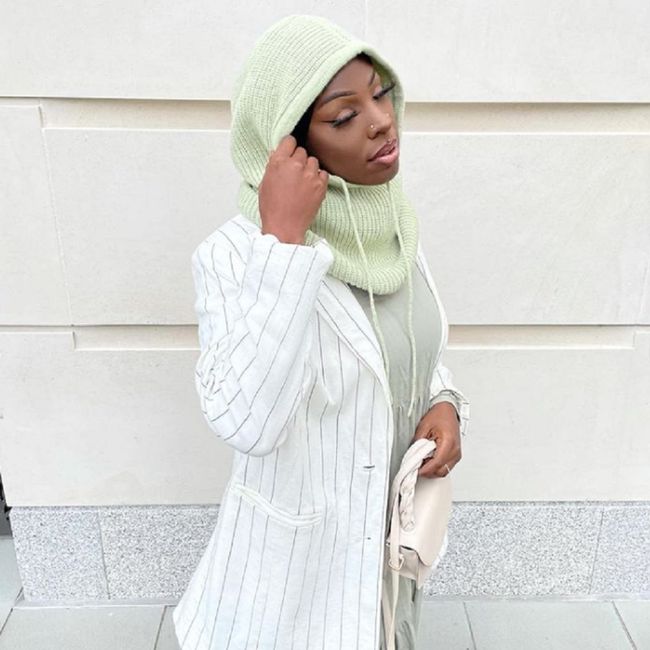Balaclavas (a tight knitted head covering/hat or a ski mask) are definitely on-trend for hijabis in Winter 2022, but it also is a trend that many have found to be controversial. I was first introduced to the trend through stylish Muslim women like @nemahsis and @indoanisa, and I appreciated how cute and cozy the style looked.
I also noticed that Muslim women were expressing how ironic it is that non-Muslim women have been covering their hair with balaclavas for a while now and it seems perfectly acceptable, but now that Muslim women are using balaclavas as a style of hijab, it has become something more. And so, public opinion of the style has become mixed with a strong dose of Islamophobia.
Besides Islamophobia, there is the general angst of a woman wearing a balaclava as a hijab but having it misinterpreted as simply a fashion statement when it serves a larger purpose. For context, watch this crazy true story that happened to @Nemahsis at the airport.
I used my Instagram stories to gauge public opinion on the balaclava/hijab trend, and here are a few sentiments some women from my own community had to say. One hijab-wearing woman wrote, “The fact that balaclavas are trending and socially acceptable is so irritating when hijab is judged negatively otherwise. It’s a double standard!”
Another commented that she prefer a head covering that “identifies her distinctly as a Muslim woman.” (See this story by my editor Dilshad about how when she wore a beanie in the winter time, losing her visibility as a Muslim was something she didn’t expect.) Others completely missed that the whole trend was even happening, and hilariously thought I was gauging public opinion on the baklava hijab trend, which had me in stitches!Sumi (@coveredinlayers), who lives in Italy, gave another perspective, saying, “I can see the controversy when it comes to Europe, because there are European countries (such as France and Belgium) that have hijab bans, and those bans don’t exist [per se] in the U.S. But we all have “institutions” that mandate certain things. The fashion ‘institution’ dictates that balaclavas would be trending [this winter], and so balaclavas became trendy. But these institutions are always catered toward what is white, frankly, and the media creates the narrative that anything other than “white” is scary or unacceptable.”
Scroll through this gallery of five beautiful balaclava styles!
Sumi makes a strong point. Muslim women covering the same parts of their bodies – even with the same items that non-Muslim, mostly white, European women – becomes unacceptable for us hijabi women but celebrated as fashionable on white, European women. The New York Times recently published an article that outlines what the balaclava is and what this current style controversy means through the lens of Muslim women, and it’s definitely worth the read.In my Winter Edit for the Haute Take, where I named balaclavas as one of the trending modest looks of Winter 2022, I mentioned that Nea Wear, a brand based in the UK, just launched their own line of balaclavas. I believe in centering the voices of Muslim women, especially in times that our hijab or modest mode of dressing is under scrutiny, or we are feeling attacked or misunderstood. The following is an interview I did with Ainara Adnan, Nea Wear’s owner.
What inspired you to come out with a line of balaclavas as a hijab company?
I never thought of launching a balaclava line as a hijab line, as I don’t believe they’re the same thing. Nea Wear is a sustainable modest fashion brand, and sometimes we forget that modest fashion is a space that includes communities outside the Muslim faith. We want to release collections that are inclusive and that we can all wear and embrace that are modest and sustainable.
I was inspired by a trip I took to northern Europe. I saw so many ladies wearing balaclavas, and they all looked so elegant and beautiful. I thought that a balaclava is an item you can wear on top or under your hijab and also even if you’re not a hijabi at all to keep you warm and cozy during the coldest months of the year.
Your brand is known for sustainability. What are your balaclavas made from?
Our balaclavas are made of a blend between sustainably-sourced Italian wool and recycled acrylic. This blend allows it to be super soft to the touch and not itchy, as it’s important that it feels comfortable in the face and hair and doesn’t create irritation.
Scroll through another gallery of five beautiful balaclava styles!

What do you think of the controversy that Muslim women have expressed about the acceptability of balaclavas worn by non-Muslim/non-hijabi women; but when Muslim women cover our heads, we face discrimination?
I see the point. Many people when they see a balaclava, don’t associate it with Islam, especially the more fashionable ones. And unfortunately the hijab is associated with a negative and media-fed distorted version of Islam that in the collective mind of many Western countries equals radicalism and terrorism. This is a very unfair and sad reality that we as hijabis and also women and men around the world who want to cover their hair for any reason, either religious or not, should raise awareness towards.
I think this conversation opens the perfect opportunity for more tolerance and understanding that if you choose to cover your hair, it’s not because you’re oppressed. But it means you’re exercising your universal free will and CHOOSING to wear an item that represents your identity – in the case of hijab, your religious identity – and everyone should be respected and allowed to do that.
Would you consider your balaclavas as a hijab itself, or can it be styled along with a wrap or square scarf?
No, [in my opinion] a balaclava is not a hijab, as much as a scarf is not a hijab. We need to revisit the word hijab and understand what it means. I think a head cover of any kind, used with the intention to be more modest is the right step; however I think we can’t confuse the two. A balaclava can be styled in any way, hijab on top, hijab underneath, on its own, with a cap … is really down to each one’s creativity.
And on that note, how did you enjoy the galleries of Muslim women creatively wearing their balaclavas, a fresh take on a tradition of head covering? Which is your favorite style? Let us know in the comments!
Source by blog.hautehijab.com


